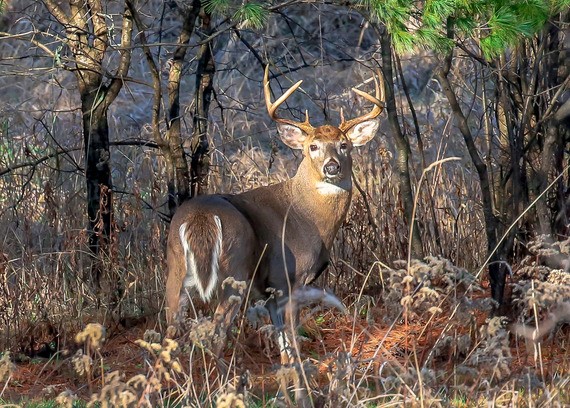Wisconsin Outdoor News launches series investigating deer herd issues in northern counties

Woodruff, Wis. — Deer hunting and Wisconsin have long been interconnected.
For years, especially in the north, the closure of schools and businesses for the November gun deer hunting season was more fact than legend. Fans attending Green Bay Packers games at Lambeau Field in November traditionally wear their blaze orange hunting clothing to stay warm. Buffalo County in the southwestern part of the state is the top-producing county for trophy bucks than any other in the nation. Even the state’s professional basketball team is known as the “Bucks.”
While deer hunting in Wisconsin is rosy on the surface, there is trouble brewing in the northern tier of counties. Deer numbers have fallen precipitously over the last 20 years.
Each fall, fewer hunters gather in traditional hunting camps, and many camps are closing. Those who still hunt “Up North” can see the effect in the small towns where the “Welcome Hunters” signs that were once so common in restaurants and gas stations are today almost non-existent.
MORE WHITETAIL COVERAGE FROM WISCONSIN OUTDOOR NEWS:
Wisconsin Natural Resources Board hears 2023’s deer hunt rundown
Commentary: Public input important to Wisconsin deer work
Wisconsin’s Vilas, Oneida county offer doe tags; Iron, Ashland buck only
Last December, less than a month after the close of what many found to be yet another frustrating gun deer season, Wisconsin legislators held listening sessions in Solon Springs, Woodruff, and Barron for hunters to vent their frustrations. These gatherings drew standing-room-only crowds.

Wisconsin Outdoor News has investigated what’s happening to the deer herd in the north and the resulting series launches with the current print issue. You can read the first part of the series here — an in-depth interview with Jeff Pritzl, the Wisconsin DNR deer program specialist. The second part of the series focusing on Bayfield and Douglas county can be read here.
The series targets the traditional deer counties of Douglas, Bayfield, Ashland, Price, Sawyer, Iron, Vilas, Oneida, Forest, and Florence which, for the most part, line the northern boundary of the state.
During the past 15 years the cumulative buck kill of these 10 counties has fallen 44% (counting gun, bow, crossbow, and muzzleloader deer seasons) compared to the previous 15 years.
Iron County’s buck kill is down a whopping 66%. Antlerless tags have been slashed as a result of the spiraling buck kill, and antlerless kill in these counties is down a cumulative 72%. In three counties – Forest, Vilas, and Iron – the antlerless kill is down more than 80%.
In short, meat poles have been pretty light in northern deer camps in recent years.
WON interviewed hunters of public and private land, business owners, loggers, Conservation Congress members, a retired DNR wildlife biologist, an ex-DNR forester who now works as a private forester, as well as the Wisconsin Department of Natural Resources’ (DNR) deer program specialist Jeff Pritzl. WON attempted to interview the individual county wildlife biologists, but the DNR’s office of communications stepped in and canceled interviews, and allowed only written responses to questions posed by WON.
WON also crunched deer numbers for each of the counties from the deer metrics system on the DNR’s website, as well as from the County Deer Advisory Councils. WON looked at the county’s buck and antlerless kills for the last 15 years (2009-23) and compared them to the previous 15 years (1994-2008) when deer numbers were at their highest.
Out of curiosity, we also compared the buck kill for the most recent 15 years against the 15 years (1979-1993) before the record herds, and found the numbers very similar in most of the counties. So, yes, WON looked at deer kills in each county going back 45 years.
What we learned is hunters are largely fearful for the future as they see their hunting tradition slipping away, and feel helpless to stop it. All blame high numbers of predators, and with wolves having increased four-fold over the past 20 years (according to the DNR’s minimum count), many are pointing a finger at them.
The sticking point is even though wolf numbers have far surpassed the goal for delisting set by the Endangered Species Act, lawsuits brought by animal rights groups have mostly kept wolves under the cloak of federal protection.
The DNR’s biologists, however, argue the reasons for fewer deer are many and complicated, and involve declining habitat and changing hunter demographics, and not solely a response to today’s predator load.
